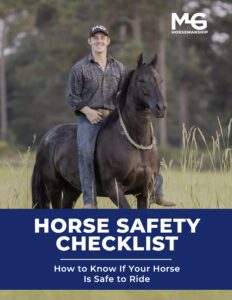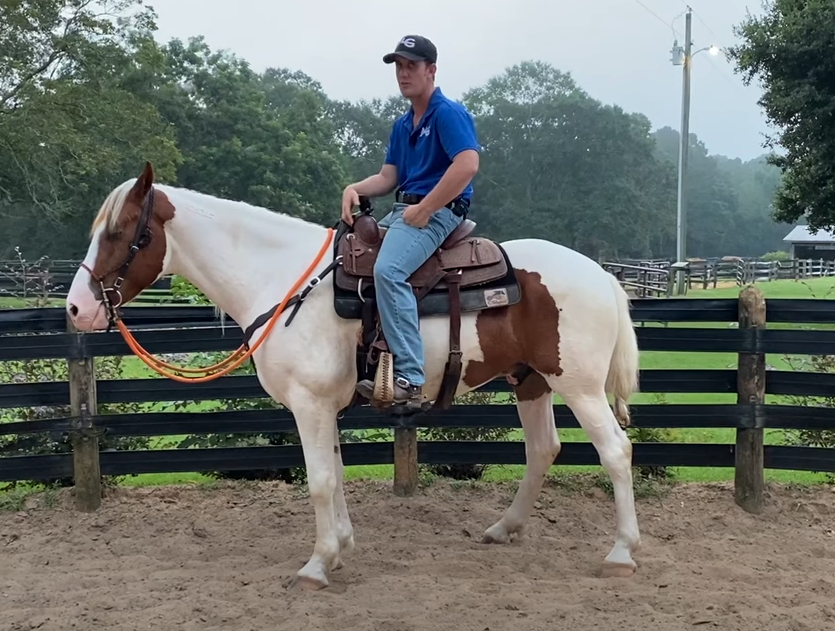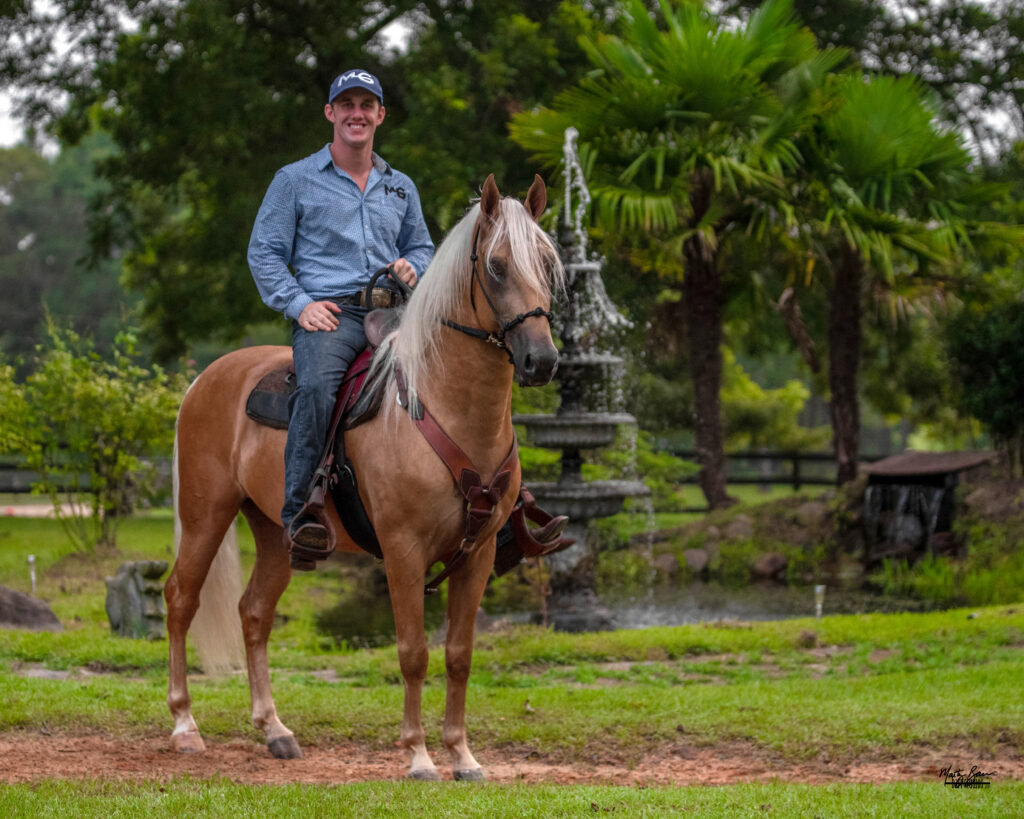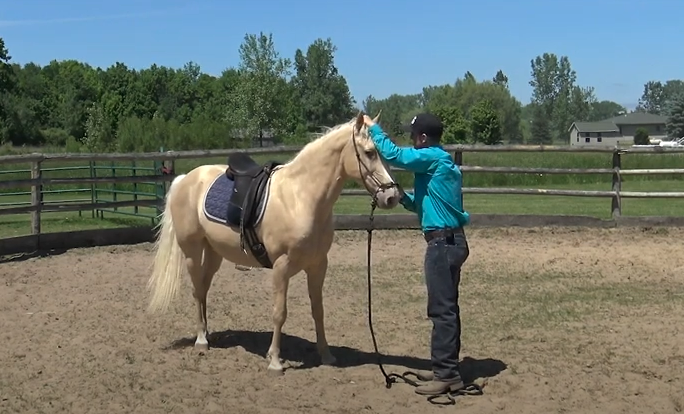This week we are focusing on confidence coaching. We are all about gaining confidence. There’s nothing more rewarding than giving a second chance to horses and riders. Seeing progress from scared or petrified people, but they’re still cantering around!
They’re not asking me the same questions every time I talk to them. They’re asking me “What can we do next? How can we go faster… How can we play this sport or that sport?”. Very few things in life give me more enjoyment than seeing the look on their face whenever they come from a place of being such lacking confidence, scared, spooked, and worried to a confident individual in the driver’s seat.
Alright, let’s get into the Q & A
Stiffness at the Canter
Question: “My horse gets stiff at the canter. Any tips? I’m working on getting him softer, but he just wants to go fast. Also, any tips to get him off his forehand?”
Answer:
Absolutely, Sarah, what you’re going through is absolutely normal. Horses get stiffer when they get scared and when they go fast. So, we need to get them soft to our liking, to your standard of how soft you want them, and then spook them. Ask them to be soft while also going faster. They should be faster at the walk than standing still. Faster at a trot than the walk and faster at the canter than the trot. We still want to keep instilling the steering wheel and that softness even if we’re going faster!
I love “power of the circle” for stiffness because you work one side at a time. If you have a completely locked horse, you’ll see me do “power the circle” and only side-check them and flex them when their feet are moving. I learned from riding warmbloods and jumping horses that were so strong and athletic that the only way you could move their heads side to side at the canter was if their feet were moving. Touch their face when their feet are in the air and release before they get down to the ground—do this on repeat until we get them soft and easy. You would gain that steering wheel at the canter.
Once you get him soft and easy at the canter, you’ll able to get him off the forehand. The reason he’s not on his hindquarters is stiffness and being out of position—these go hand-in-hand. Collection and softness go hand-in-hand, so focus on softness first and really getting that steering wheel installed. Again, check out “power of the circle.” Then you can work on collection and position. Install steering by picking on one side at a time at the speed you want; when you get control of their face, you’ll be able to get him off the forehand.
Farrier Issues
Question: “My horse leans on the farrier, and he jerks his foot away. He doesn’t do it to me.”
Answer:
What you should do is start fiddling with him with a rope. We have colts here or there saying, “No, not for the farrier.” So instead of the farrier using his hand, use a rope to lift the hooves. When the horse stomps his foot down, he won’t get a release or reward. Also, when you desensitize them, make sure you’re using a rope. You’ll be able to slap harder, tap on his foot more, and mess with him, so he tries to stomp and sit down.
He doesn’t get that release when he stomps his foot down because you have a rope attached to it. Even though he takes his foot from you, it’s like you do with your little brother, “I’m still touching you.” You’re going to get that non-release.
They can slip their leg away and get an instant release if you’re holding their leg in hand. That’s not ideal. So you want to do some rope work and desensitization. It’s going to help you not only picking up the feet but also cleaning them out. By tapping on their foot and slapping the bottom of it, you’ll be able to prepare them for the farrier.
Want more answers to your questions? Check out our Q&A videos on YouTube!
How Safe is your Horse?
Can you control every part of his body, even if he’s scared or unsure?
There are some specific things that I believe every horse should be able to do before he or she is considered completely safe to ride. So that you can see how safe your horse is to ride, I’ve created this FREE Horse Safety Checklist.





